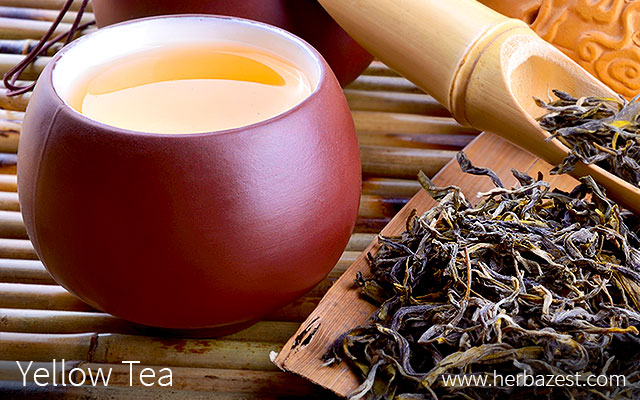Yellow tea is a Chinese specialty, whose origins are believed to date back to the Qing Dynasty, most probably during the 17th century, though it is a subject of debate among tea lovers. It is seldom found on the global market, and its enthusiasts have to pay a high price for importing it. In recent years, the production of yellow tea has been declining, because of its high cost and time-intensive processing. Moreover, the worldwide interest in other types of tea makes the cultivation of yellow tea unsustainable and it is forcing manufacturers to adjust their processing methods to focus on the most widely popular green tea leaves.
What is Yellow Tea?
The yellow tea process is similar to that of green tea, but it has a flowery aroma and a sweet flavor, so it might be a good alternative for those who want to enjoy green tea benefits, but are bothered by its grassiness. Yellow tea leaves are only slightly processed, but their drying period is slower and more time-consuming than in the production of green tea, which gives them a greenish yellow hue.
BECAUSE YELLOW TEA IS ONLY SLIGHTLY OXIDATED, IT CONTAINS VERY LITTLE CAFFEINE AND LACKS THE GRASSY SCENT OF GREEN TEA.
This true tea is produced from the immature buds of Camellia sinensis and it is exclusively cultivated in China, in scarce quantities; this is why yellow tea price is higher than other varieties of Chinese tea, and it can range between $10 and $36.5 dollars per 50 grams, depending on the variety. However, yellow tea bags are more affordable than the loose leaves, costing about $5 per 15 grams, or five bags.
In the past, there were several yellow tea varieties but most of them are lost, and only three still being cultivated: Jun Shan Yin Zhen (also called silver needle yellow tea), Huo Shang Huang Ya, and Meng Ding Huang Ya.
Yellow Tea Benefits
Although the properties of yellow tea have not been extensively researched, due to the fact that it is minimally processed, it is said to retain most of its catechins and polyphenols content. The high concentrations of these compounds is widely recognized for being responsible of yellow tea health benefits.
Yellow tea has been linked to the reduction of low-density lipoproteins (LDL), better known as “bad cholesterol”, as well as to the reduction of blood sugar content. The consumption of yellow tea for weight loss is based on it ability of increasing body temperature, a process known as thermogenesis that promotes fat burning. Moreover, yellow tea leaves are very low in caffeine and are said to be smoother on the stomach and the liver than other tea types.
Additionally, the antioxidant properties of catechins have been linked to a strengthened immune system, which makes the body less prone to bacterial and viral infections. There is also evidence that regular yellow tea consumption rejuvenates the skin, improves bone density and might help prevent osteoarthritis.
How to Make Yellow Tea
To brew a cup of Chinese yellow tea, it is best to add two tablespoons of loose leaves for every eight ounces (250 mL) of water right before boiling. The leaves can be re-steeped three to five times, but each subsequent brewing times should be slightly extended to allow the leaves to infuse in the water. Brewed yellow tea has an appealing golden color, which can be best enjoyed in glass teapots.
Although yellow tea is not widely popular and can be quite expensive, because of its delicate flavor and heightened medicinal benefits, enthusiasts may find this gourmet tea a delicacy worth of every effort.
Sources
- Encyclopedia of Human Nutrition, Tea
- Experimental and Therapeutic Medicine
- Fermentations and Food Science
- Hot Water for Tea, pp. 72-73
- The Healing Power of Tea




